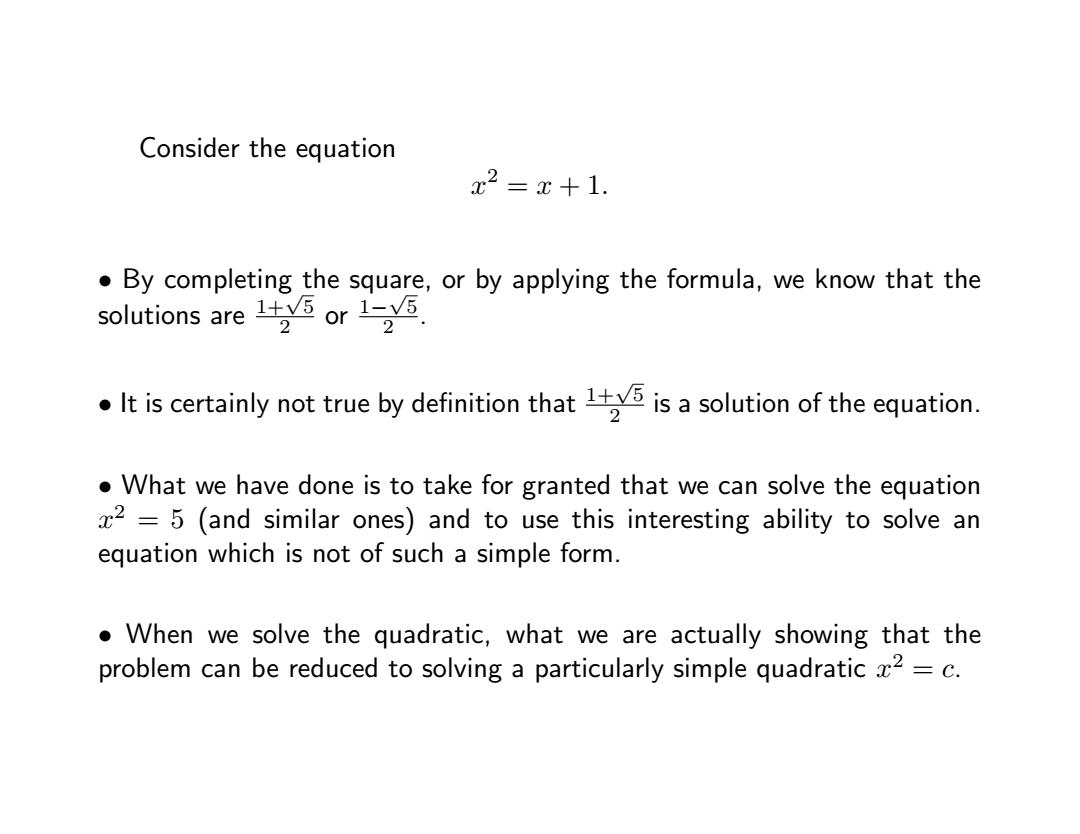正在加载图片...

Consider the equation x2=x+1. By completing the square,or by applying the formula,we know that the solutions are 15 or 15 2 2 It is certainly not true by definition that5 is a solution of the equation. 2 What we have done is to take for granted that we can solve the equation z2=5 (and similar ones)and to use this interesting ability to solve an equation which is not of such a simple form. When we solve the quadratic,what we are actually showing that the problem can be reduced to solving a particularly simple quadratic 2=c.Consider the equation x 2 = x + 1. • By completing the square, or by applying the formula, we know that the solutions are 1+√ 5 2 or 1− √ 5 2 . • It is certainly not true by definition that 1+√ 5 2 is a solution of the equation. • What we have done is to take for granted that we can solve the equation x 2 = 5 (and similar ones) and to use this interesting ability to solve an equation which is not of such a simple form. • When we solve the quadratic, what we are actually showing that the problem can be reduced to solving a particularly simple quadratic x 2 = c